|
|
|
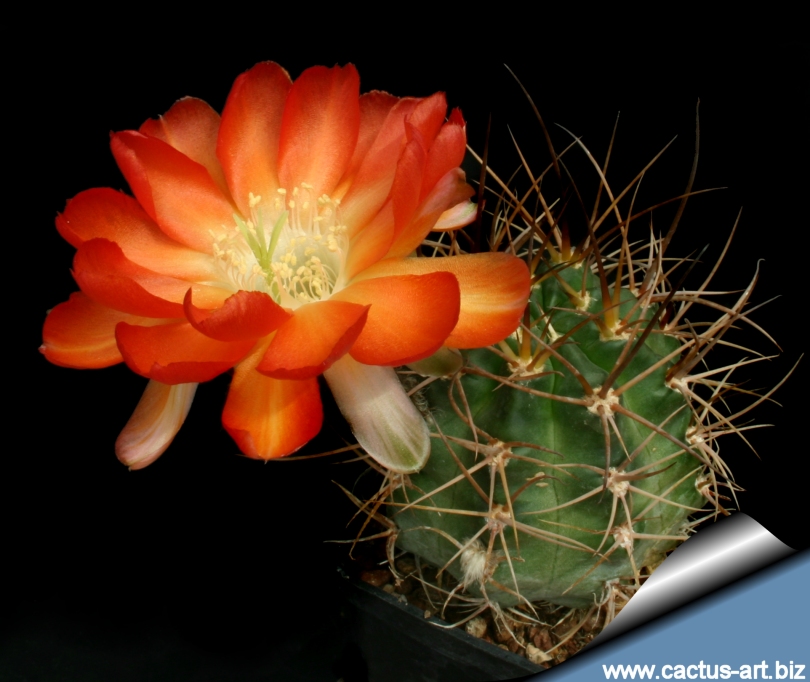
Lobivia haematantha v. hualfinensis - R146 Andalgala to Hualfin,
Catamarca, Argentina
This is a very
interesting plant with
big orange-red flowers and heavy, curving, pink/brown or orangish spines.
A
real eye catcher!
|
Description: L.
haematantha ssp. hualfinensis is a
geophyte cactus, usually
solitary o slowly branching to form small clumps.
Stem: Globose to shot cylindrical, Silky grey-green olive- green to pinkish
or brownish-green. p to 12 cm tall , 5-7 cm in diameter.
Ribs: Up to 12 (but usually less) vertical or slightly
spiraling, low.
Spines: Heavy, curving, pink/brown or orangish.
Radial spines: 8 to 12, bent against the plant body, interlacing,
1-3 cm long.
Central spines: Usually 1, long, curly, 4-10 cm long.
Flower: Diurnal, broadly funnelform, orange to bright red 3-4 cm
wide, with usually a white or cream-yellowish throat circle.
Fruit: Globose to ovoid, green to brownish-violet, semidry,
dehiscent.
Root: Tap root.
|
|
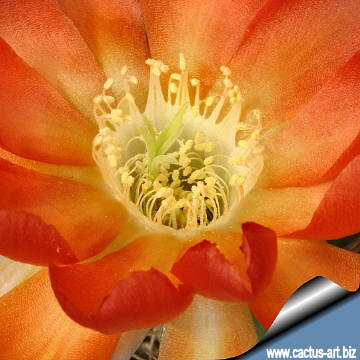 |
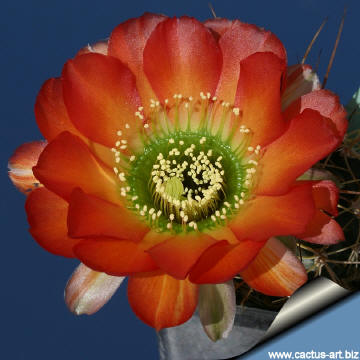 |
|
The
throat circle is generally white, but some individuals may have a
different coloured throat like the green one on the right .
|
|
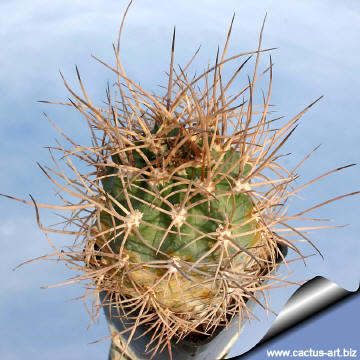
Spines are very strong. |
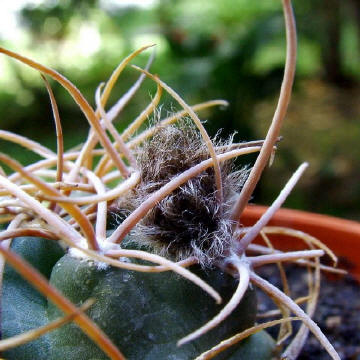
Photo &
©
copyright
by
Süleyman Demir Turkey
The flower bud is very hairy. |
|
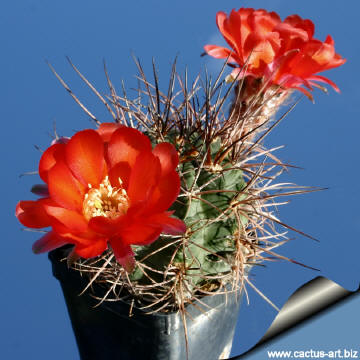 |
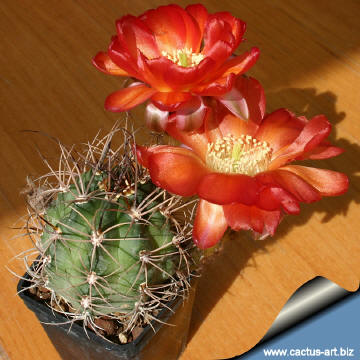
|
|
Photo of plants belonging to the Lobivia
(Echinopsis) haematantha
complex (This taxon has lots of synonyms (like most Lobivia) whit several
controversial varieties and subspecies):
|
|


Advertising
|
|
|
|
|
Family:
Cactaceae (Cactus
Family)
Scientific name: Echinopsis
haematantha subsp. hualfinensis (Rausch) J.G.Lambert
1998
Origin: Northern Argentina
Conservation status: Listed in
CITES appendix 2.
Synonyms:
- Lobivia haematantha
(Speg.) Britton & Rose
-
Echinocactus
haematanthus Speg. 1905
-
Lobivia
hualfinensis Rausch 1968
-
Echinopsis hualfinensis
(Rausch) H.Friedrich & Glaetzle 1983
|
|
|
|
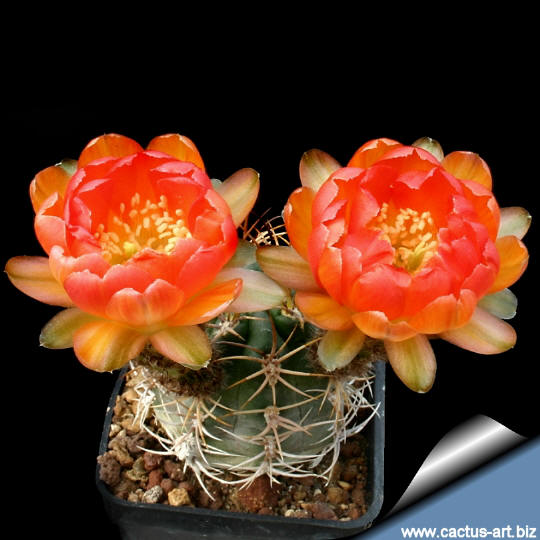
The disclosing buds are particularly elegant.
|
|
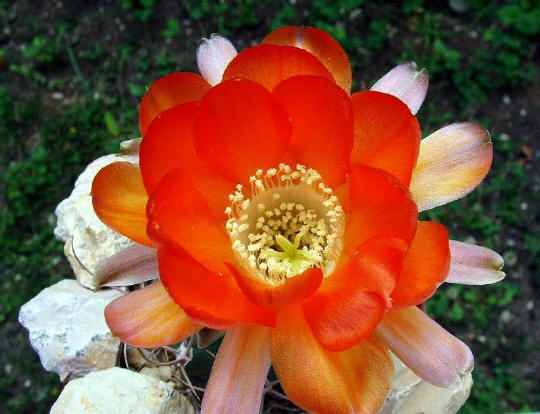
Photo &
©
copyright
by
Süleyman Demir Turkey
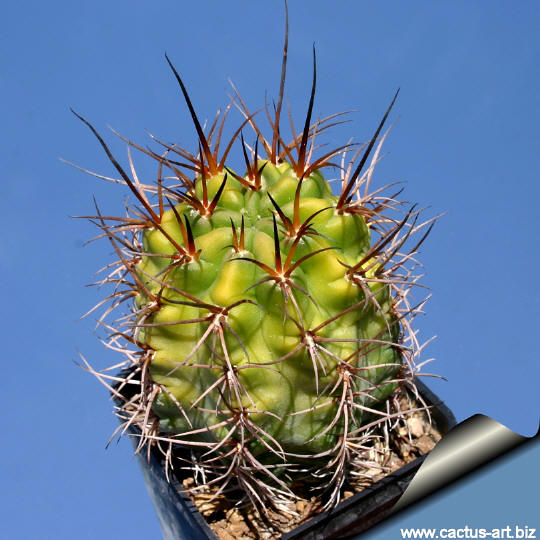
A variegated specimen.
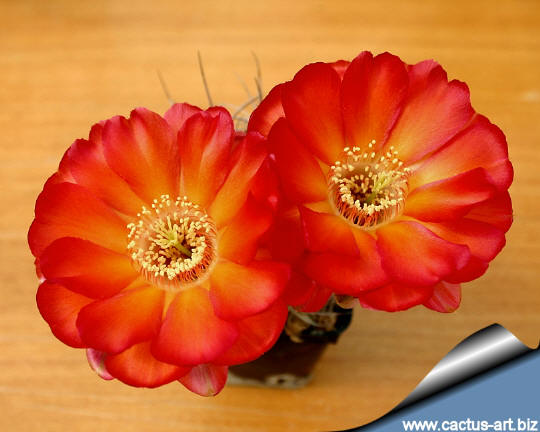 Cultivation:
It is a summer grower species that offers no
cultivation difficulties. Water regularly in summer (but do not
overwater ) needs good drainage and very porous, keep rather dry
in winter.
Feed with a high potassium
fertilizer in summer.
It is quite frost resistant if kept dry (hardy to -5° C)
Outside full sun or afternoon shade, inside needs bright light, and some
direct sun.
Propagation: Direct sow after
last frost. (seldom
produces offsets)
|
|